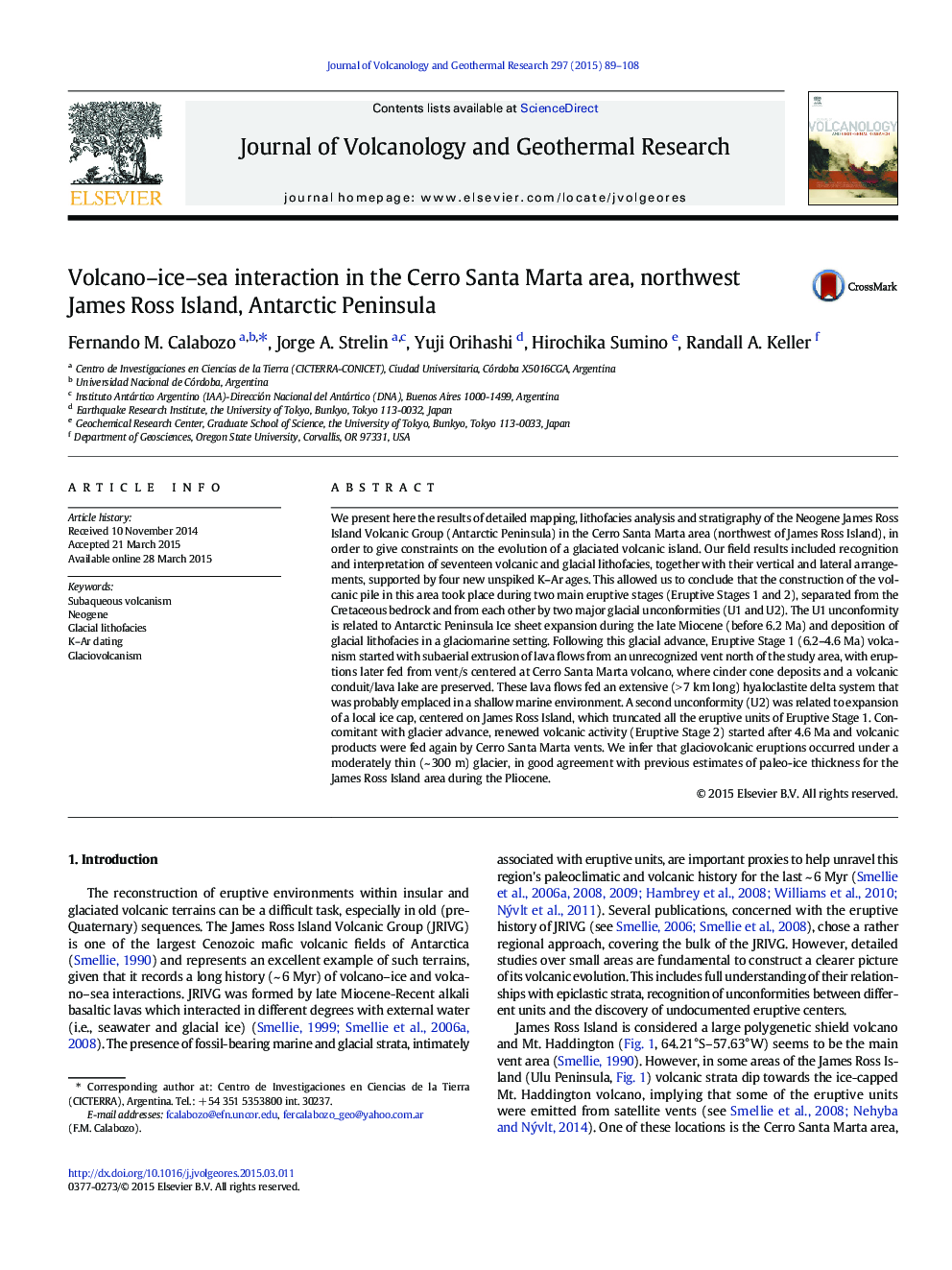| کد مقاله | کد نشریه | سال انتشار | مقاله انگلیسی | نسخه تمام متن |
|---|---|---|---|---|
| 4714452 | 1638325 | 2015 | 20 صفحه PDF | دانلود رایگان |
• We analyzed the Neogene JRIVG stratigraphy at Cerro Santa Marta area.
• Before 6.2 Ma, the Antarctic Peninsula ice sheet advanced over the sea.
• Subaerial eruptive units nourished a marine lava-fed delta during Stage 1.
• Cerro Santa Marta was a polygenetic volcano during early Pliocene times.
• At 4.6–4.0 Ma, subglacial eruptions took place under a thin, local ice cap (~ 300 m).
We present here the results of detailed mapping, lithofacies analysis and stratigraphy of the Neogene James Ross Island Volcanic Group (Antarctic Peninsula) in the Cerro Santa Marta area (northwest of James Ross Island), in order to give constraints on the evolution of a glaciated volcanic island. Our field results included recognition and interpretation of seventeen volcanic and glacial lithofacies, together with their vertical and lateral arrangements, supported by four new unspiked K–Ar ages. This allowed us to conclude that the construction of the volcanic pile in this area took place during two main eruptive stages (Eruptive Stages 1 and 2), separated from the Cretaceous bedrock and from each other by two major glacial unconformities (U1 and U2). The U1 unconformity is related to Antarctic Peninsula Ice sheet expansion during the late Miocene (before 6.2 Ma) and deposition of glacial lithofacies in a glaciomarine setting. Following this glacial advance, Eruptive Stage 1 (6.2–4.6 Ma) volcanism started with subaerial extrusion of lava flows from an unrecognized vent north of the study area, with eruptions later fed from vent/s centered at Cerro Santa Marta volcano, where cinder cone deposits and a volcanic conduit/lava lake are preserved. These lava flows fed an extensive (> 7 km long) hyaloclastite delta system that was probably emplaced in a shallow marine environment. A second unconformity (U2) was related to expansion of a local ice cap, centered on James Ross Island, which truncated all the eruptive units of Eruptive Stage 1. Concomitant with glacier advance, renewed volcanic activity (Eruptive Stage 2) started after 4.6 Ma and volcanic products were fed again by Cerro Santa Marta vents. We infer that glaciovolcanic eruptions occurred under a moderately thin (~ 300 m) glacier, in good agreement with previous estimates of paleo-ice thickness for the James Ross Island area during the Pliocene.
Journal: Journal of Volcanology and Geothermal Research - Volume 297, 15 May 2015, Pages 89–108
